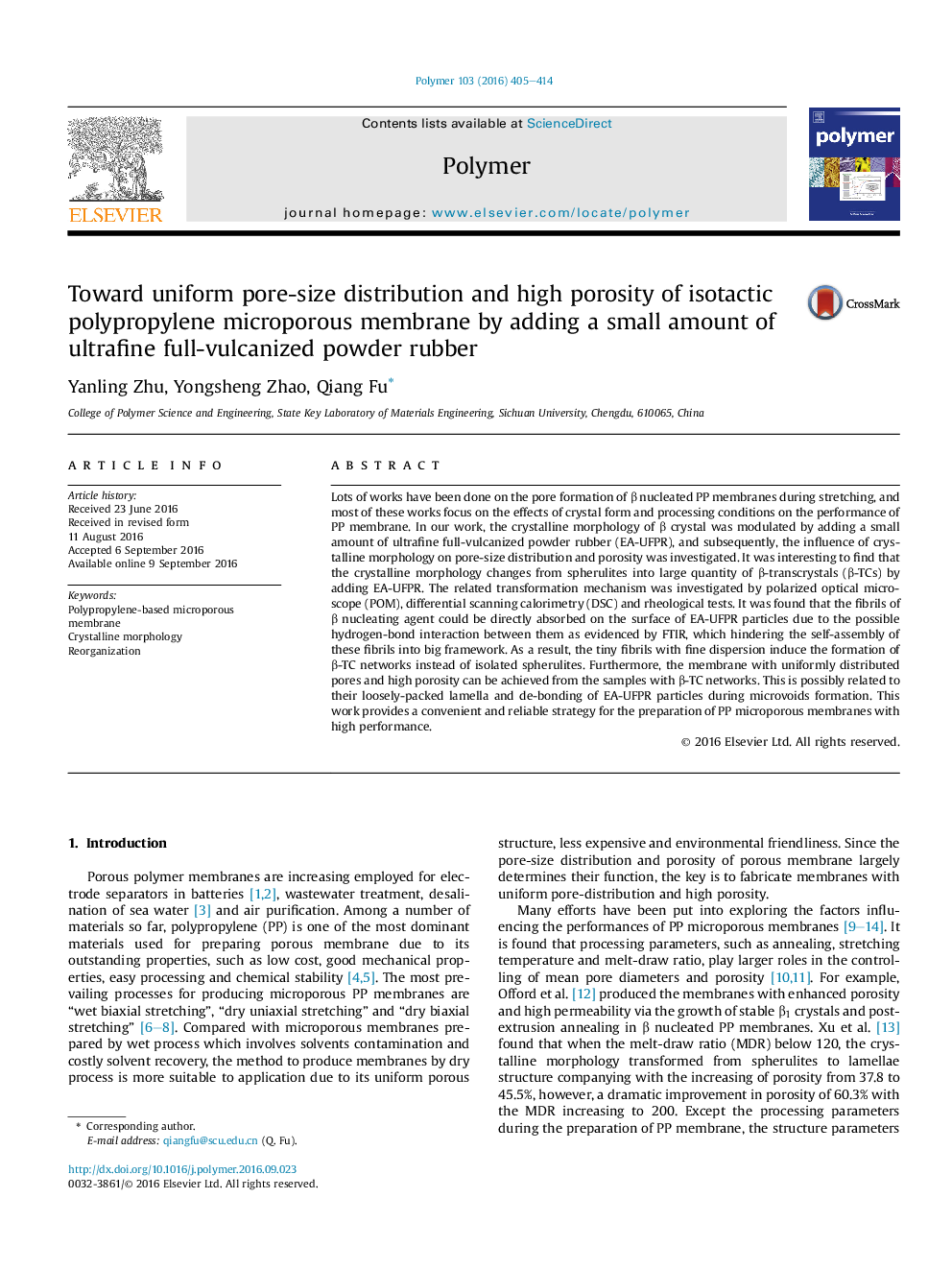| Article ID | Journal | Published Year | Pages | File Type |
|---|---|---|---|---|
| 5178717 | Polymer | 2016 | 10 Pages |
â¢The crystalline morphologies transform β-spherulites into large quantity of β-transcrystals (β-TCs) by adding small amounts of EA-UFPR.â¢The transformation mechanism is related to the hindering effect of EA-UFPR on the self-assembly of β nucleating agent (β-NA) due to the possible hydrogen-bonding interaction between β-NA and EA-UFPR.â¢The membrane with uniformly distributed pores and high porosity can be achieved from the samples with β-TC networks.
Lots of works have been done on the pore formation of β nucleated PP membranes during stretching, and most of these works focus on the effects of crystal form and processing conditions on the performance of PP membrane. In our work, the crystalline morphology of β crystal was modulated by adding a small amount of ultrafine full-vulcanized powder rubber (EA-UFPR), and subsequently, the influence of crystalline morphology on pore-size distribution and porosity was investigated. It was interesting to find that the crystalline morphology changes from spherulites into large quantity of β-transcrystals (β-TCs) by adding EA-UFPR. The related transformation mechanism was investigated by polarized optical microscope (POM), differential scanning calorimetry (DSC) and rheological tests. It was found that the fibrils of β nucleating agent could be directly absorbed on the surface of EA-UFPR particles due to the possible hydrogen-bond interaction between them as evidenced by FTIR, which hindering the self-assembly of these fibrils into big framework. As a result, the tiny fibrils with fine dispersion induce the formation of β-TC networks instead of isolated spherulites. Furthermore, the membrane with uniformly distributed pores and high porosity can be achieved from the samples with β-TC networks. This is possibly related to their loosely-packed lamella and de-bonding of EA-UFPR particles during microvoids formation. This work provides a convenient and reliable strategy for the preparation of PP microporous membranes with high performance.
Graphical abstractDownload high-res image (434KB)Download full-size image
